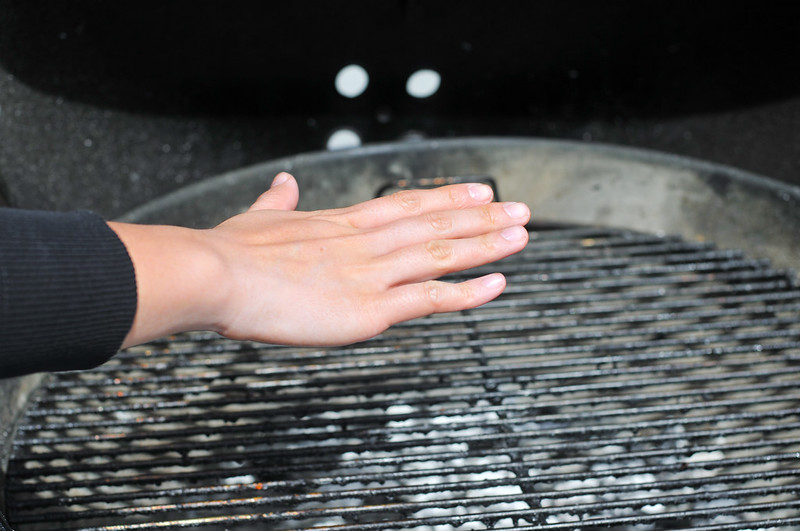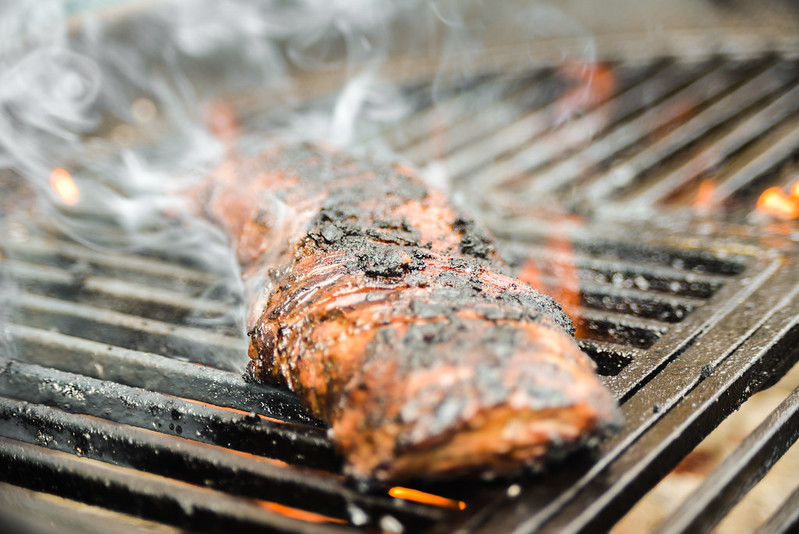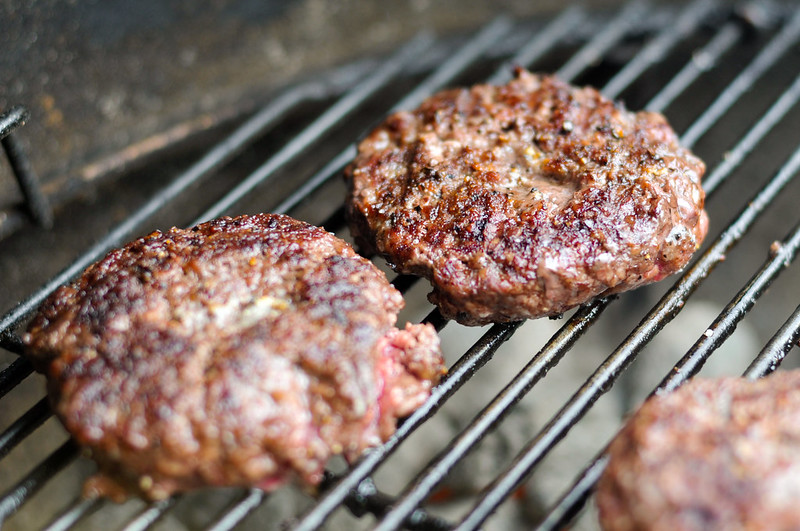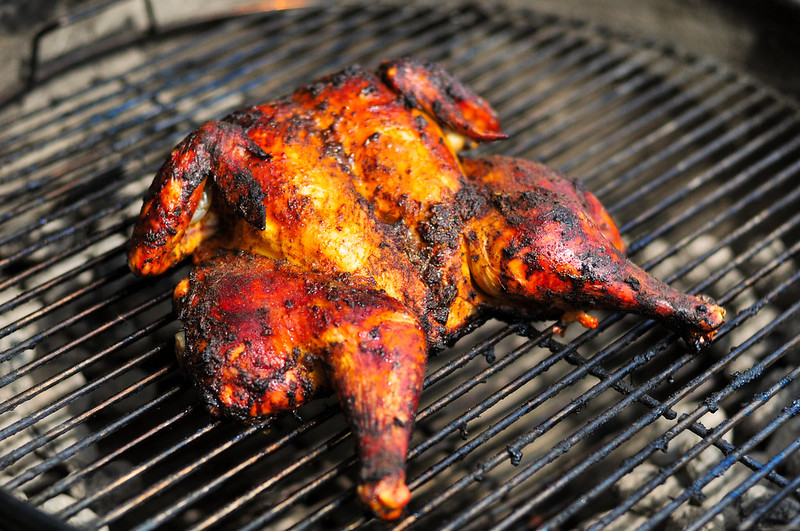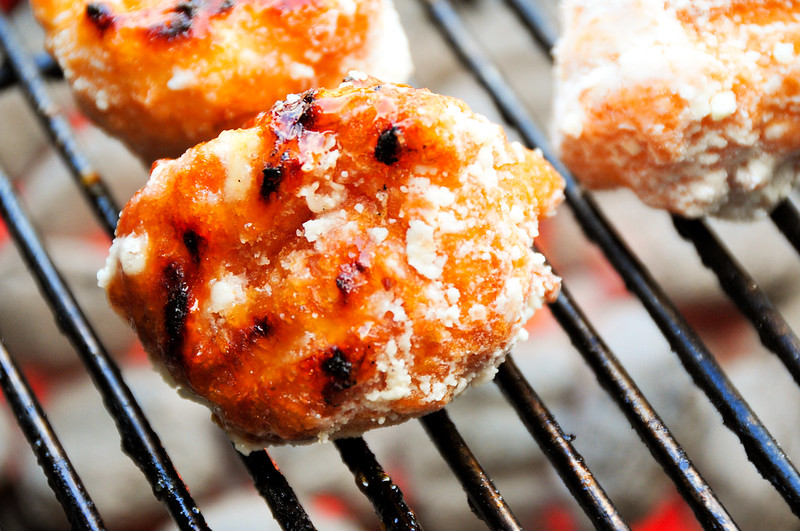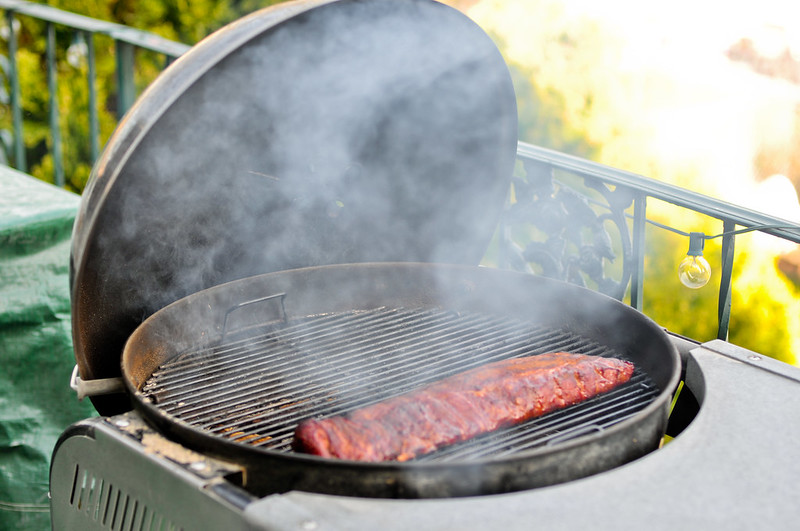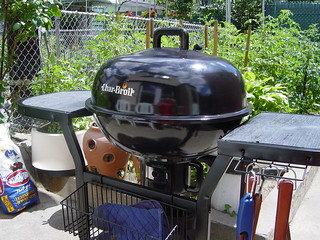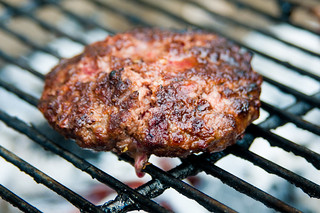Meat Tips: Gauging the Heat
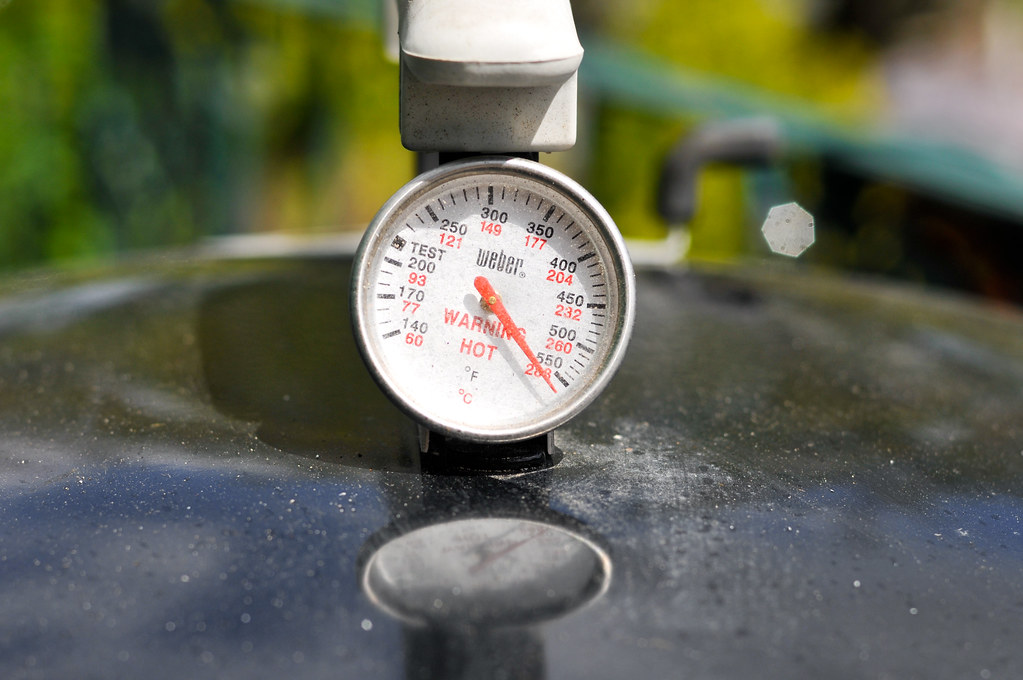
Continuing on the trend of dispersing some grilling basics over this summer, after finding the best coal arrangement for your cook, the next biggest thing is getting to know how hot your fire is and how to control it. Different foods like different heats—while a steak will appreciate a nice searing heat, over the same fire a chicken will quickly burn to a crisp before it ever has the chance to cook—so gauging your fire's temperature is a crucial step before slamming down some food.
The best way to know how hot your grill is a thermometer. Those hood mounted thermometers on grills are usually pure crap, but sometimes crap is good enough for something as imprecise as grilling, where instinct trumps accuracy.
I do have a high end ThermoWorks Thermocouple with a high temp alligator clip probe that I could bust out and attach to the grilling grate, but I generally let that cruddy Weber thermometer give me a general idea of the range I'm in, even if it is more than 25° off from reality.
Barring a thermometer, there's another useful tool for gauging the heat that is completely free, somewhat accurate, and always on hand. Well, it is your hand. Hover your hand about four to five inches above the cooking grate and count the seconds it takes until you're positive your skin will melt off if you leave it there any longer. With the findings, you can determine if the fire is...
High
2 to 3 seconds; 450 to 650°F
Right after the coals are dumped from the chimney, the heat is extreme—too hot to cook a lot of things. You may be ranging more around the 1-second mark here, which is why this is the time to let the coals heat up that dirty cooking grate for about 5 minutes, then scrub it off and test again. Now you should be more in the area of 2 to 3 seconds, and also playing with a temperature that won't be sustained long. If there's a skirt steak or thin pork chop that's going benefit from a quick and hot cook, now's the time to get that done.
Medium-High
4 to 5 seconds; 375 to 450 °F
The second the charcoal is lit and spread out, it starts loosing heat. It will only take about 5 to 10 minutes to go from high heat to medium-high, and a lot of your direct grilling will most likely be done in this range. This is the temperature that makes things like burgers, sliced veggies, and fish really shine. The power of the sear is still in full effect, but with a slightly lower temperature the food is afforded more time to cook properly and thoroughly. The medium-high range will sustain longer than high, but you're still looking at about a 10 to 15 minute window with the grill uncovered.
Medium
6 to 7 seconds; 325 to 375°F
Totally middle of the road, offering everything the name implies—a fire low enough to gently cook, while still hot enough to brown outsides nicely during longer cooking times. This is the king of the indirect cook—chickens, turkeys, and other roasts all love a soothing medium heat. A well-seasoned grill with the lid on can easily keep in the medium range for 45 to 60 minutes, which is perfect for those longer cooking items.
Medium-Low
8 to 10 seconds; 250°F to 325°F
Once you drop to around the 300°F mark, you're dealing with a fire that isn't going to brown anything effectively. If you're working with direct grilling, it's time to replenish those coals and get the grill back up to temperature. The heat's going to start fading quicker when you reach this range too, but never being one to waste heat, if I'm not replenishing at this point, my grill goes from cooker to warmer—reheating anything that may be sitting around that went cold, and I do mean anything—once even bringing a hardened zeppole back to delicious life.
Low
11 to 15 seconds; 225 to 250°F
When you're this low, you're no longer grilling, but barbecuing (as long as you add smoke into the equation). At this temperature the fat and connective tissue in ribs, pork shoulders, and briskets slowly, but surely begin to break down, transforming the toughest cuts into moist and tender delights that gives me purpose. You can transform a kettle grill into a smoker, but my experience with this has been mixed. Sure, it works in a pinch, but it requires frequent charcoal changes and keeping a nearly constant eye on the temperature. For cooking in the low range, I recommend getting a smoker, a book, and a days worth of cold beers and just sit back and enjoy the good life.
Adjusting the Heat
As you might have noticed, the range of temperatures happens pretty quickly with charcoal, going from searing-high to a whimpering low in just about an hour. This can sometimes lead to frustration, creating extra work to keep the grill at a desired temperature. As much as I hate to admit it, gas grills have a one-up over charcoal in this arena. It doesn't always have to be difficult though—just grab your trusty grill lid and make use of those air vents to own that fire.
Like any fire, charcoal needs oxygen to survive, and if you can control the amount of oxygen that gets to it, you can effectively control the temperature. All good charcoal grills will have at least two air vents: one on the bottom half of the grill, and one at the top. Adjusting these restricts the air flow in and out of the grill, thus giving a handle on the heat being produced. With my 22-inch Weber kettle, I've found keeping both vents open will give me a good medium-high heat, while closing the bottom halfway and leaving the top vent open results in a sustained medium. Closing all vents will cut off the air flow and extinguish the fire, handy when you're done for the day, but very sad if that's not what you meant to do.
Charcoal choice also makes a difference in heat control. Lump charcoal will burn hotter for longer, is much quicker to react to air adjustments, but burns for a slightly shorter period than briquettes. The oft-hated briquettes will usually burn longer at a more steady temperature—the reason I stand by them for for cooking low-and-slow—but are slower to change temperatures based on air flow.
Both charcoals have a place in my life, choosing one or the other based on what I'll be cooking, but they're so different that I recommend trying both yourself to figure out what gives you the best workable heat.
With lots of heat variables to choose from, there's much that can be accomplished on the grill. A little know-how is all it takes to get the grill just where you want it, at which point you can rightfully dub yourself "Master of the Flames."
You Might Also Like
Comments
-
Daniel Electric thermometers often show different measurement results, for example, the Chinese http://www.open-youweb.com/termometr-elektroniczny-2measure-050300-opinia/ should be avoided
